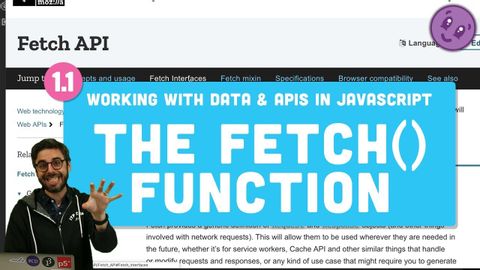
Subtitles & vocabulary
1.1: fetch() - Working With Data & APIs in JavaScript
00
林宜悉 posted on 2020/03/27Save
Video vocabulary
stuff
US /stʌf/
・
UK /stʌf/
- Uncountable Noun
- Generic description for things, materials, objects
- Transitive Verb
- To push material inside something, with force
B1
More expect
US /ɪkˈspɛkt/
・
UK /ɪk'spekt/
- Verb (Transitive/Intransitive)
- To believe something is probably going to happen
- To anticipate or believe that something will happen or someone will arrive.
A1TOEIC
More script
US /skrɪpt/
・
UK /skrɪpt/
- Noun (Countable/Uncountable)
- Written text of a book, play, film, or speech
- Set of letters or characters of a written language
- Transitive Verb
- To write a text for a movie, play or speech
B1
More Use Energy
Unlock All Vocabulary
Unlock pronunciation, explanations, and filters
